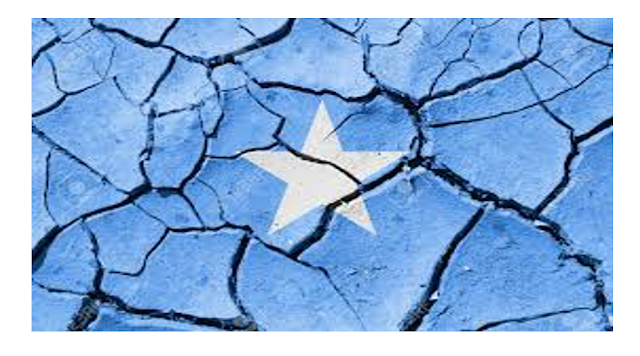Before the Europeans set foot in the Horn of Africa, there was no Somali state whatsoever in the region, other than self-governing clans, some of which were under the rule of the Ottoman Empire such as Berbera and Zeila cities
During the colonial rule in Africa and in many parts of the world, boundaries defining maps of almost all the countries were demarcated based on treaties signed among the involved parties, without the will and consent of the native residents being colonized.
The territories predominantly inhabited by the Somali speakers were not spared from that scramble for Africa in 1884. It was partitioned into three states and two territories: British Somaliland Protectorate, French Somaliland Colony, Italian Trust Territory of Somalia, Northern Frontier District - a province carved out of Southern Somalia and annexed to Kenya in 1925 - and Haud and Reserved Area that was handed over to Ethiopia by the colonial Britain in 1956.
In 1950s leading to the independence of Trust Territory of Somalia and the British Somaliland Protectorate, there was a sentiment and a desire committed to a concept or a doctrine termed as " The Greater Somalia" or "Somaliweyn", and the blue flag of then the Somali Republic - with the five-pointed star in the middle of it - was representing that policy.
As the first two gained independence and later united in 1960 priming the way for that concept, within the first year it became evident that the idea of Greater Somalia was not proving to be viable. The resultant Republic from the unification turned out to be dominated by the Southerners and the other diffused state became deliberately reduced to a status of a province.
The Northern Frontier District (NFD) and the Somali region in Ethiopia never existed as colonial countries in their entire history, but rather were regions chipped off South Somalia and Somaliland respectively. If these territories choose to secede from their current countries, the only option available for them is rejoining back to their parent states. However, the people in those territories do not entertain the idea of Greater Somalia and are better off in their current colonial arrangement of being part of Kenya and Ethiopia.
Thus, the undeniable fact is that all the 55 countries in the African continent - with the exception of Ethiopia, Liberia, and South Sudan - and many others around the world are "Colonial Creation States" transcending ethic and tribal affiliations, and Somaliland case is not different from that.
South Somalia has never been an independent nation/country for a fraction of a second in her entire existence without the Somaliland Republic. Right after the unification, the Somaliland machinery was the only soul fueling the Republic. The whole world knows the current situations in the two countries and this does not need much commentary.
After a long and difficult struggle and sacrifices, Somaliland rectified the flagrant foul of the 1960 by regaining its sovereignty in 1991. Despite this well-established history of Somaliland, the so-called successive governments in South Somalia are in deep denial, referring to Somaliland as a self-declared state or a secessionist region of Somalia.
However, the national flags are symbols of the country's history reflecting its struggles, aspirations, and ideals. The flags that symbolize the Demise of Greater Somalia Doctrine include Somaliland's and Djibouti's. The black star - embedded in the white background – in the Somaliland flag indicates that the concept of Somaliweyn is dead and no longer viable. Similarly, in the middle of the Djibouti flag is a bloody star in a white background that sends the same message.
Out of the three Somali states and the two territories that emerged as a result of the European colonialism, Italian Somalia is the only one that descended into a failed state for the past 30 years, and the sparse as well as the fragile peace on the ground is contingent on the presence of AMISOM - a peacekeeping mission of foreign troops contributed by some African nations. In complete contrast, in Somaliland and Djibouti - there are viable governments that have the trust of their people and their authorities reach all over their respective countries.
The African Union needs an effective leadership to efficiently carry out its mandate, otherwise it will end up being a decaying organization that exists symbolically and run by autocrats who are out of touch with African issues that demand resolutions . The Somaliland case has been dragging on for almost 30 years now, and the most recent and only action taken by the African Union (AU) was the Fact-Finding Mission that arrived in Somaliland in 2005 and its final report and recommendations remain ignored by the organization up to this day.
The inaction attitude of the AU on the Somaliland case for so long has no explanations other than organization's fear of the emergent democracy in a continent retarded by authoritarian regimes. However, birds with the same feather flock together. The other vibrant democracies in the continent, such as Kenya and Malawi, unilaterally without the consent and signal of the AU have lately stepped forward by engaging with Somaliland Republic. Such action is a new dawn in Africa and a bold example for other African countries to follow suit without the AU's blessing.
About the Author:
Ahmed J Yassin -
ajyassin4@gmail.com
Clinical Laboratory Professional
Jacksonville, Florida












No comments:
Post a Comment